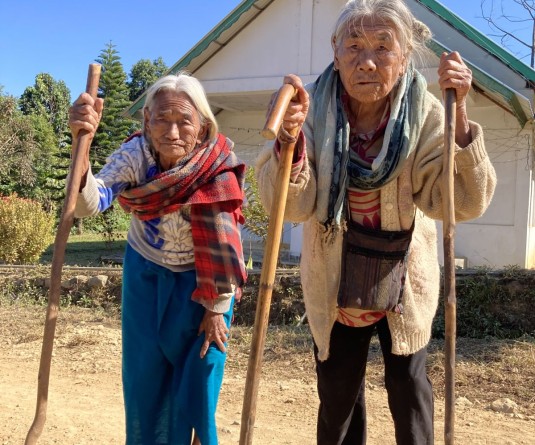
M Chuba Ao
BJP National Vice President
In the words of Prime Minister Narendra Modi, the Cooperative Movement is a great model for 'self-reliance' and it is also the answer to many of our challenges in terms of agrarian population and rural poor.
As is well known, Modi ji does not believe in mere preaching. His words are backed byactions.The Modi government has given a special emphasis on the development of the cooperative sectorand the Ministry of Cooperation was set up on 6th July, 2021. The Prime Minister also gave enough emphasison the subject and thus Home minister Amit Shah ji was assigned the additional task to shoulder the responsibilityof this new Ministry. We know it well that the Cooperative ministry’s motto is ‘Sahkar se Samruddhi’ -meaning Prosperity with Cooperation.
But there are issues. The adequate importance of the 'power' of the word Cooperation is not understood.It is not a contemporary challenge. This has been the main hurdle in the path of Cooperative Movementin the country that actually started way back in 1904.
I am myself involved in the Cooperative functioning for many years. At present I am heading theNagaland government-run PSU, MARCOFED as its chairman.
Both at the level of my individual and public interaction with several kinds of people and stakeholders, I find people are mostly 'interested' only in deriving benefits from various cooperative bodies.
The importance of the word Cooperate is --- 'contributing' and this is seldom understood. People in rural areas perceive cooperative societies and banks as government lending agencies only. I am bewrong, but my experience is this is perhaps more in our own tribal world -- the northeastern states.
Yet again, I may be wrong. My take is very simple. The Cooperative Movement cannot be successfulwithout hardworking people and the people and the management following transparent and corruption-freeworking models. Why is the Cooperative Movement so successful in the state of Gujarat? These are the basic twin reasons.
There are a few other problem areas in the context of cooperative movement perhaps across the country.In some parts of India, the Cooperative Credit Societies do not cater to all the credit requirements of the farmers. They grant loans only for agricultural operations.
Hence the rural farmers especially in states like Maharashtra approach the money-lenders to meet theirrequirements. This stands in the way of the growth of the movement.Moreover, under the Congress party and various regional parties, political holds have been encouraged.
Large farmers and landlords, with their superior economic power, have been given almost free hand tomanage to have a greater hold on these societies. In the northeast, if there are no landlords, the politicalmasters and elites and well to do families have held the monopoly.
However, ever since a central ministry has been created and Amit Shah ji is himself in the driving seatof the ministry, a lot of good works and 'reforms' have been undertaken.
I come back to the example of Gujarat yet again. And let me share that Gujarat has the success stories of cooperative movement in the dairy, sugar and banking sectors. In the last few years, the scope of cooperativesin the western state has increased in other sectors including fruits and vegetables.
We know of the Congress party's legacy and also the communists. With due respect to respective statesand the political cultures in some of these states, let me caution all here about the culture of unionism.We all know how Amul is a successful model.
In the initial years a man called Verghese Kurien, a gentleman from the state of Kerala, spearheaded the movement, involving dairy farmers, semi-educated villagers and women. The joke goes, Late Kurien was once asked in Kerala, why do not you do something similar in Kerala (your native state). Kurien's response was: "One big problem is I have so many of my own people and so many communists and trade unions".
Not much we do know about the Kerala Model of Cooperative Movement, and we are not surprised. The candid observation will be that, the growth of the cooperative movement in various parts of Indiaincluding states with high literacy percentage have suffered from nepotism, politicisation and gross partiality.
Even in states like Mizoram and Nagaland while the self-help groups have been doing well, there are problemswith cooperative bodies.
A few years back, I attended a cooperative conference at the national level. I was told that in some states, thereis a peculiar problem. rural cooperative banks could be 'running in loss' but they are 'forced to survive' because of vested political interests.
Prime Minister Modi ji says, "The example of the cooperative model of the dairy sector is before us. Today India is the largest milk producer in the world in which Gujarat has a major share. In the past years, the dairy sector hasbeen growing rapidly and is also contributing more to the rural economy."
It is true, India is now able to produce milk worth about Rs 8 lakh crore in a year; and this business is handled mostly by women forces - the mothers and the sisters.
This brings us to talk about the scope of massive employment at multiple levels -- villages, blocks, small and large towns and cities.
It is true, not enough people in India aspire to be entrepreneurs and members and active members in the cooperativebodies.In most cases, we have people who are afraid of taking risks, or afraid of trying something new.
People must appreciate the fact that trying something ‘New’ and being tough before hurdles are a few essential feature of one’slife and a basic rule to survival Mantra especially in the modern times.You cannot learn nor can you achieve anything significant without hard work or without teamwork. This isessentially the spirit or the lesson from the cooperative movement.
Cooperatives can play
game-changers in northeast:
I strongly feel if potentials and people's participation are channelised effectively, the northeast India can benefit a lot through cooperative hand-holding strategies.
This can successfully lead to social, economic, political and regional stability for the northeast region. The success of Act East policy of the Centre too could depend a lot on the cooperatives.
The Cooperatives can also help in integrating the region's products and resources to the globalmarket. All these are more relevant in the absence of corporate investments.
Let us take for example Bamboo production and products made of bamboo.
We know it well that bamboo has become the lifestyle of the North East region. Therefore, if Bamboo Cooperatives are formed, these could be made use of to rejuvenate the socioeconomic lifestyle of the people.
In the process, we can preserve, rear, encourage and innovate the bamboo ecosystem.I am aware of the success tales of certain cooperative societies in states such as Sikkim.
A few years ago, it used to be argued that the Sikkim State Co-operative Supply and Marketing FederationLtd. (SIMFED) could be cited as a role model and can be replicated in other states of region. Founded in 1983 as the state's top marketing organization, this organisation has helped in the mission of carrying outbulk marketing of agricultural and horticultural products, including significant cash crops, and distributing farm input through cooperatives. This is just an example and we have many other good examples.
In the final analysis, we may not be wrong to say that the Prime Minister's mantra of 'SabkaSaath, SabkaVikas, SabkaVishwas, Sabka Prayas' is essentially the soul of the cooperative.
The Modi government has taken several new steps trying to make cooperative societies, institutions competitive in the market, by providing them a level playing field with other market players.
The centre has even provided assistance to the cooperative societies by reducing the taxes. While making reforms, the government has also given the cooperatives equal status to that of the Farmer Producer Organizations.
This is also going a long way in helping the growth journey.




